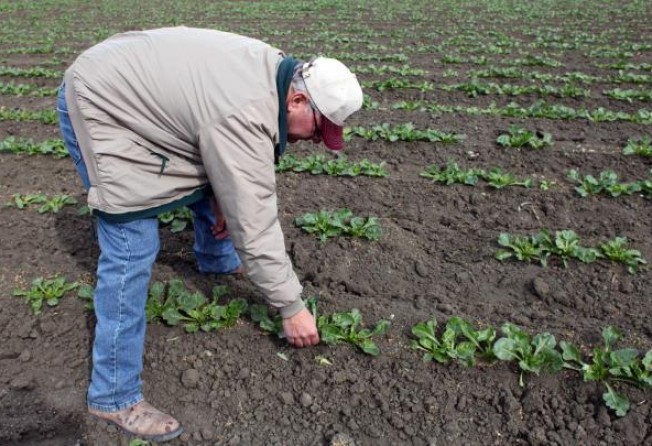
Supply-chain flaws at heart of food scandals
Companies must overhaul their processes to end damaging scandals, Rabobank researchers say

With food scandals occurring on a weekly basis, food and agricultural (F&A) companies are having to repair their reputations.

Rabobank's food and agriculture research team recently released a report that addresses the flaws in the current global F&A supply chain structure, showing that closer co-operation is the key to improving the supply chain.
The supply chain has long been reliant on the fact that people will always need to eat. However, with increasing scrutiny of the quality and authenticity of food, the F&A sector can no longer operate under the old systems, with Western F&A companies already taking the initiative to remedy this.
"Global F&A companies have begun making changes in their supply chains following increasing quality control problems which have been experienced," said Paul Chen, managing director and regional head of food and agribusiness research and advisory at Rabobank.
According to the report, the dominant supply chain model is structured in a linear fashion. Suppliers, processors and retailers form short-term partnerships independent from the influence and interests of other members of the chain, creating a fragmented relationship with little communication.
The report explained that the current model is highly inefficient and restricts F&A companies' ability to respond to changes in supply and demand dynamics.
This system also results in wasteful processes that cause more environmental degradation than is necessary as shortcuts are taken to cater to supply-and-demand dynamics.
The solution, according to the report, is to develop a dedicated supply chain that would facilitate the constant and continuous flow of information between suppliers and buyers, as new agreements and partnerships have to be formed to achieve an efficient and safe supply chain.
"Closer co-operation of this sort will transform the nature of F&A partnerships from transactional ones that are centred on chasing price to a system focused on creating value," said Justin Sherrard, global strategist at Rabobank.
Closer co-operation of this sort will transform the nature of F&A partnerships from transactional ones that are centred on chasing price to a system focused on creating value
According to the report, the wheels of change are already in motion. Global brands such as Bayer CropScience and Starbucks have been engaging more deeply with their supply chains as proper supply chain management has been elevated as a strategic issue.
Starbucks has begun investing in its supply chain in Yunnan province, focusing on improving quality. They have established a local coffee-growing training centre to improve local production. In return, Starbucks wants to market high-quality Yunnan coffee.
At the same time, Bayer CropScience has begun strengthening relationships with growers and retailers in vegetable supply chains. Retailers select varieties, while Bayer produces seeds, and growers deliver to market specifications. This close communication reduces risk for all involved and keeps quality in check.
As global firms start to switch to a more efficient supply model, Chen highlights the importance of Chinese companies' need to play catch-up.
"China's supply chain is notoriously known as underdeveloped and driven by profits instead of quality. Companies have only just begun to look into improving their supply chain; they have to solve a number of infrastructure problems before they can even think of changing their supply model," Chen said.
Economic growth in China is one of the major reasons why mainlanders are able to flex their new-found spending power on luxury goods such as bags, watches and cars.
In 2012, HSBC estimated in a report that a quarter of the world's luxury goods were bought by mainland Chinese, with a 5 per cent increase from 2007, indicating the trend is showing no signs of slowing down.
With more money in their pockets, luxury items may not be the only things on mainlanders' minds as they start to look beyond material goods.
"As China moves towards its economic goals of urbanisation, luxury goods, cars and houses may not be all that its citizens actively want to obtain," Chen said.
"Food is something that we consume daily and do not think much about, however as China's standard of living increases, so will China's demand for healthier and better quality food."
With demand for safe and healthier food, China's consumers will look to foreign and global brands to satisfy their demands. This raises questions about what local F&A companies have to do to remain competitive.
"Bigger companies need to step up and set the standard - brands speak for the whole supply chain, and Chinese brands are not valued due to the lack of trust," Chen said.
"Trust must be re-established and the first step is for the government to communicate with F&A companies."
Beijing seems aware of the lack of communication and awareness as it looks to create a single agency to deal with food and drug regulations after recent scandals.
But there is a perception that much more needs to be done by government and domestic firms to fix the rift caused by decades of health scares and scandals.